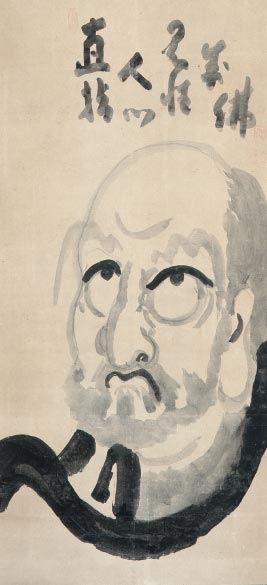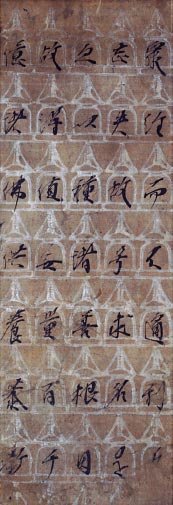The Chinese priest Xuanzang
(602–664)–the model the model for Journey to the West, brought many
sutras from India to China. Among these sacred texts, which he
translated from Sanskrit into Chinese, are 600 volumes of the Great
Wisdom Sutras that convey the teachings of emptiness. Of these, the
Heart Sutra is the most popular today.

In Edo-period (1615–1868) Japan, there lived a Zen priest named Hakuin who underwent rigorous training and created many paintings and poems. He also wrote on Zen for the general populace. The story of how Hakuin saved the village girl from shame is well known in demonstrating his lofty spirit.
In Edo-period (1615–1868) Japan, there lived a Zen priest named Hakuin who underwent rigorous training and created many paintings and poems. He also wrote on Zen for the general populace. The story of how Hakuin saved the village girl from shame is well known in demonstrating his lofty spirit.


Bodhidharma by Hakuin Ekaku
(1686–1769)
Edo period, 18th century
The painter-priest Hakuin produced this work in his later years.
What could Bodhidharma possibly be staring at?
Edo period, 18th century
The painter-priest Hakuin produced this work in his later years.
What could Bodhidharma possibly be staring at?
This exhibition presents various Buddhist sutras and the images and
paintings that manifest their teachings. Introduced here are many works
representing the astonishing wisdom and enterprise created by Buddhism
from ancient times to this day. Animated videos of the Buddha
Sakyamuni’s life, the sutra production that went on during the
construction of Tōdai-ji Temple’s Great Buddha Hall, and the Chinese
master Xuanzang’s journey to India will also be shown for the enjoyment
of children and young visitors. We hope that you will explore the world
of Buddhism through this exhibition.
Fragment of the Lotus Sutra (Togakushi Edition)
Heian period, 12th century
Calligraphy by Fujiwara no Sadanobu (1088–1156)
Quickly brushed letters are executed on this decorated paper with
stupas printed in mica.
Heian period, 12th century
Calligraphy by Fujiwara no Sadanobu (1088–1156)
Quickly brushed letters are executed on this decorated paper with
stupas printed in mica.